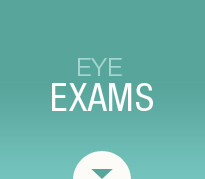Eye Topic of the Month
April is Sports Eye Safety Month
Nearly 30,000 sports-related eye injuries are treated in U.S. emergency rooms each year, according to the most recent estimates we have. The good news is that most serious eye injuries could be prevented by wearing appropriate protective eyewear.
Which Sports Cause the Most Eye Injuries?
Eye injuries can happen in almost any sport, but some sports are higher risk than others. One study found that basketball was the leading cause of sports-related eye injuries in the United States, followed by baseball, softball, airsoft rifles, pellet guns, racquetball, and hockey.
Types of Eye Injuries in Sports
Sports-related eye injuries can range from scratches or bruises on the eyelids to vision-threatening injuries. Some common injuries include:
- Corneal abrasions, or scratch on the surface of the eye
- Bruises on eyelids or skin around the eye
- Retinal detachments, which can lead to permanent vision loss if not treated promptly
- Traumatic cataracts
- Subconjunctival hemorrhage, or blood spots appearing on the eye
- Internal bleeding
- Fractures to the bone around the eye
- Damage to the optic nerve or glaucoma
- Open globe injuries, which can lead to permanent vision loss
How to Avoid Sports Eye Injuries
Different activities and sports have different levels of risk for eye injury. Make sure that you’re using the right kind of eye protection for each activity. Regular eyeglasses do not offer proper eye protection and, in some cases, can make an injury worse if they shatter.
Wear sports eye protection
Protective sports glasses with shatterproof plastic, called polycarbonate lenses, should be worn for sports such as basketball, racquet sports, soccer, and field hockey. Choose eye protectors that have been tested to meet the American Society of Testing and Materials (ASTM) standards or that pass the CSA racquet sports standard. Read our full guidelines about protective eyewear for sports and activities for additional details.
In ice hockey and lacrosse, wear a helmet with a polycarbonate face mask or wire shield. Hockey face masks should be approved by the Hockey Equipment Certification Council or the Canadian Standards Association (CSA).
Boxing and full-contact martial arts pose an extremely high risk of serious and even blinding eye injuries. There is no satisfactory eye protection for boxing, although thumbless gloves may reduce the number of boxing eye injuries.
When to sit out of sports
If you already have reduced vision in one eye, consider whether it’s worth the risk of injuring your other eye before participating in a high-risk sport. Check with your ophthalmologist to see what appropriate eye protection is available and whether they advise participating in any high impact or other high-risk sports.
Spectators at sporting events should also be careful. Balls, bats, and players can end up in the stands at any time. Keep your eyes on the game and watch out for foul balls and flying objects.





